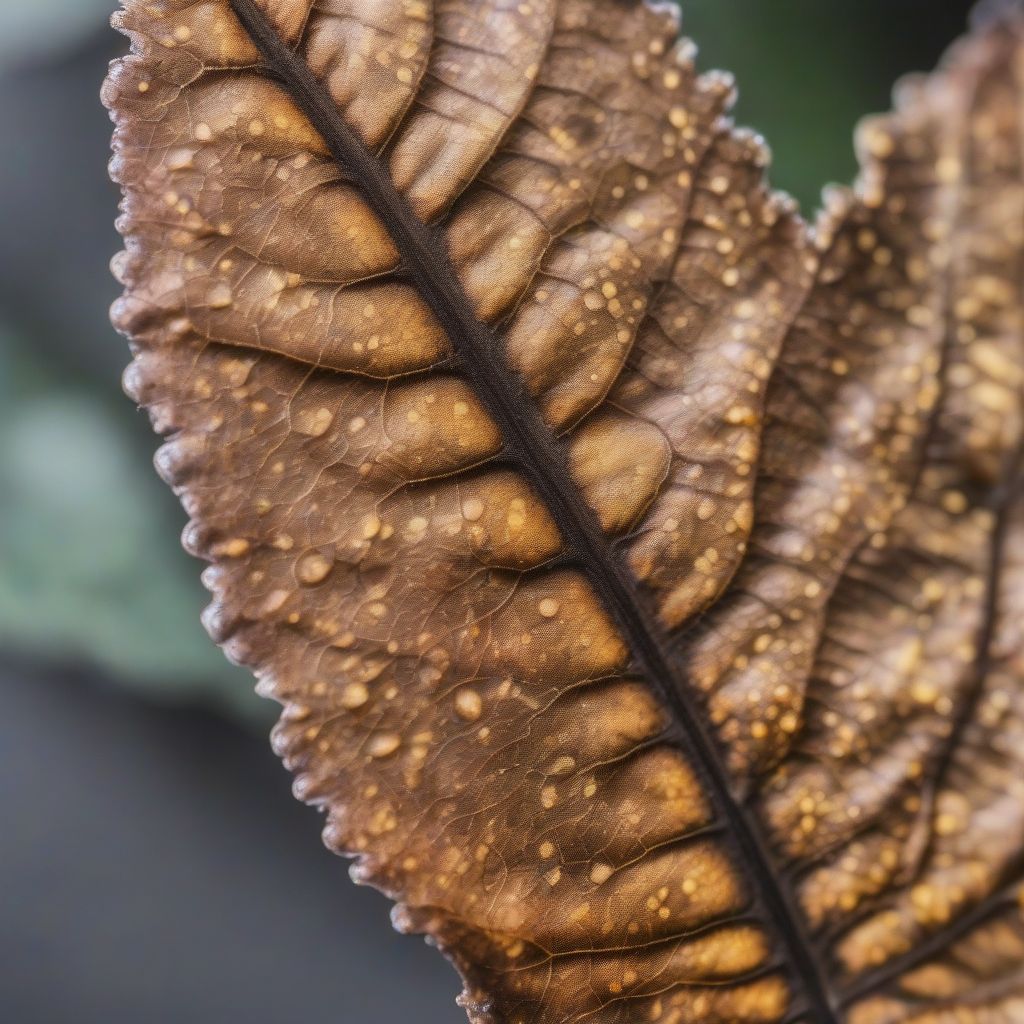Have you ever nurtured a promising plant, only to watch it mysteriously wilt and decline? The culprit might be a silent invader: a fungal infection. These microscopic organisms can wreak havoc in your garden or houseplants if left unchecked. But fear not! With a little knowledge, you can become a plant detective, identifying fungal foes and taking action to protect your leafy friends. This guide will equip you with the tools to diagnose and address common fungal infections, ensuring your plants thrive.
Recognizing the Telltale Signs of Fungal Infections
Fungal infections manifest in various ways, often mimicking other plant problems. Accurate identification is crucial for effective treatment. Here are some key signs to look out for:
Leaf Symptoms
- Spots and Lesions: These can vary in color (brown, black, yellow, red), shape (circular, angular, irregular), and size. Some spots may have a halo or a target-like appearance.
- Powdery Mildew: This appears as a white, powdery coating on leaves, stems, and flowers. It’s often mistaken for dust but rubs off easily.
- Downy Mildew: Similar to powdery mildew, but the growth is usually on the underside of leaves and appears grayish or purplish.
- Rust: Orange, yellow, or brown pustules (small bumps) on the underside of leaves are a classic sign of rust fungi.
- Leaf Distortion: Curling, twisting, or puckering of leaves can indicate a fungal infection.
Stem and Root Symptoms
- Cankers: Sunken, dead areas on stems or branches, often discolored.
- Wilting: Fungi can affect the plant’s vascular system, causing wilting even when the soil is moist.
- Root Rot: Decaying roots, often mushy and discolored, are a sign of root rot, typically caused by fungi in overly wet soil.
- Damping-off: Seedlings and young plants suddenly collapse and die due to fungal infection at the soil line.
Fruit and Flower Symptoms
- Blossom Blight: Flowers turn brown and die prematurely.
- Fruit Rot: Soft, decaying spots on fruits, often accompanied by mold growth.
 Fungal Leaf Spots
Fungal Leaf Spots
Common Types of Fungal Plant Diseases
Several fungal diseases plague plants. Here are some of the most prevalent:
Powdery Mildew
This ubiquitous fungus thrives in humid conditions. It affects a wide range of plants, including roses, cucumbers, and grapes.
Downy Mildew
Unlike powdery mildew, downy mildew prefers cool, wet conditions. It often targets vegetables like lettuce, spinach, and cucurbits.
Rust
Rust fungi require two different host plants to complete their life cycle. They commonly affect roses, beans, and snapdragons.
Black Spot
This fungal disease primarily affects roses, causing black spots on leaves and premature defoliation.
Anthracnose
Anthracnose can infect a variety of plants, including trees, shrubs, and vegetables. Symptoms include leaf spots, cankers, and fruit rot.
Fusarium Wilt
This soilborne fungus enters plants through the roots and disrupts water transport, leading to wilting and eventual death.
Diagnosing and Treating Fungal Infections
Accurate diagnosis is essential for effective treatment. Examine the plant carefully, noting all symptoms. Researching specific plant types and their associated diseases can be helpful. Consulting with a local garden center or extension office can provide expert guidance.
Treatment Options
- Fungicides: Chemical fungicides can be effective, but choose carefully and follow instructions precisely. Consider using organic options whenever possible.
- Cultural Practices: Proper watering, adequate spacing, and good sanitation can prevent fungal growth. Remove infected plant parts promptly and destroy them.
- Biological Control: Some beneficial microbes can help suppress fungal diseases.
- Home Remedies: Baking soda, neem oil, and apple cider vinegar are popular home remedies with varying degrees of effectiveness.
Preventing Fungal Infections
Prevention is always better than cure. These strategies can help protect your plants:
- Choose Resistant Varieties: Select plant varieties known for resistance to common fungal diseases.
- Provide Proper Air Circulation: Good airflow helps prevent fungal growth. Avoid overcrowding plants.
- Water Properly: Avoid overwatering, as it creates a favorable environment for fungal development. Water at the base of plants, avoiding wetting the foliage.
- Sanitize Tools: Clean and disinfect gardening tools regularly to prevent the spread of fungal spores.
- Rotate Crops: Rotating crops can disrupt the life cycle of soilborne fungi.
Conclusion
Identifying and addressing fungal infections is vital for maintaining healthy plants. By learning the telltale signs, understanding common fungal diseases, and implementing preventative measures, you can safeguard your garden and enjoy flourishing foliage. Remember, early detection is key to successful treatment. If you’re unsure about a diagnosis, seeking advice from a local expert can be invaluable.
Don’t let fungal infections wilt your gardening enthusiasm. By being proactive and informed, you can cultivate a thriving and vibrant garden. Share your experiences with fungal infections in the comments below! Have you encountered a particularly challenging fungal disease? What strategies have you found effective in preventing or treating fungal infections?



